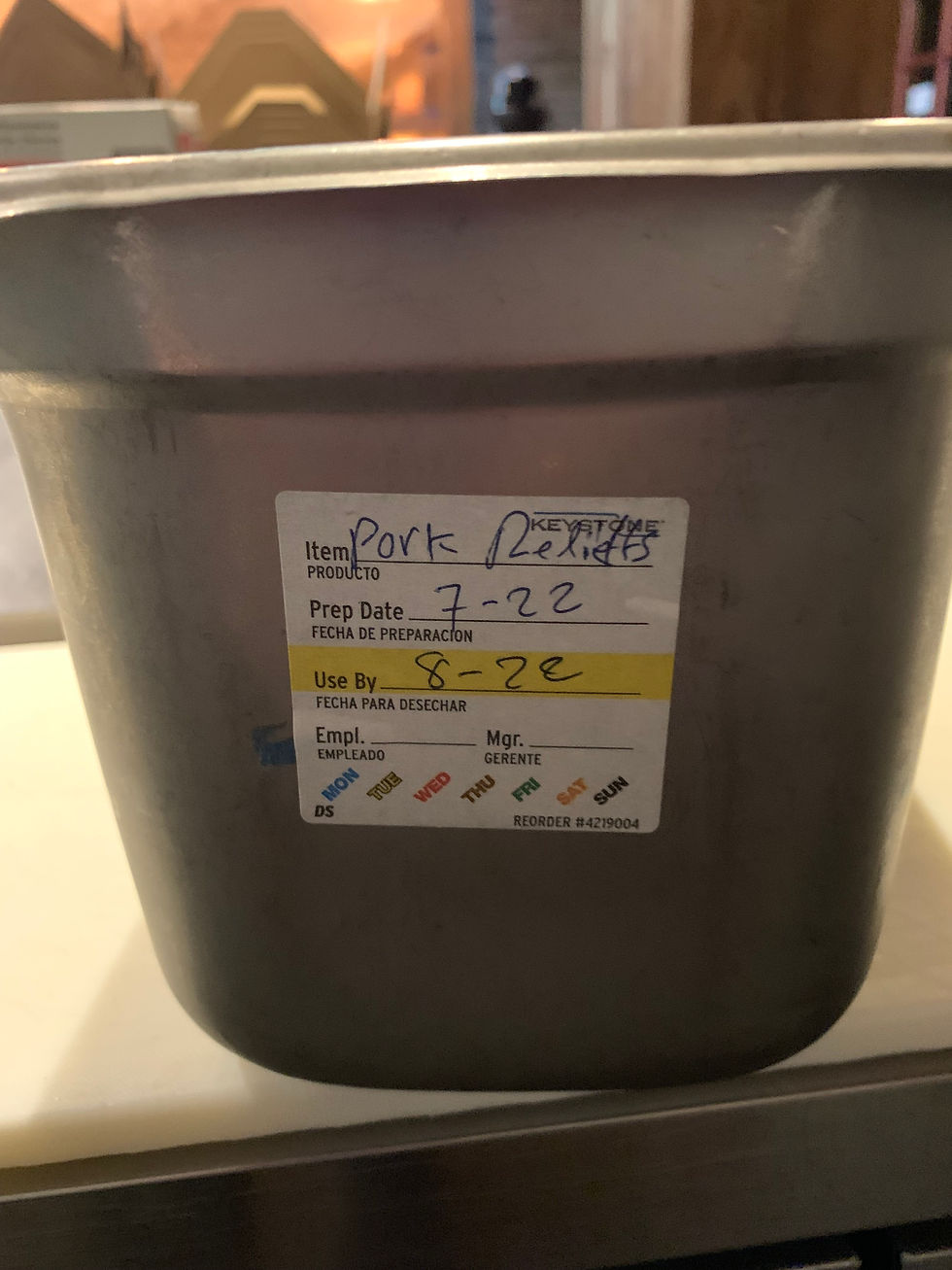What's wrong with this Picture? August 2021
- mcfoodsafety
- Aug 23, 2021
- 2 min read
These are actual photographs from different inspections in our county. Can you see what the problems are?
1. ↓ In-house plumbing installed. This is a sump pump was installed by the owner of this coffee shop for the ice machine and milk pitcher rinser. Fresh water is also being drawn form the handwashing sink.
2. ↓ Pork Rillettes
From Wikipedia - Rillettes is a preservation method similar to confit where meat is seasoned then slow cooked submerged in fat and cooked at an extremely slow rate for several hours (4 to 10 hours). The meat is shredded and packed into sterile containers covered in fat. Rillettes are most commonly made with pork, but also made with other meats.
Since this is identified by Wikipedia (and most cookbooks) as a 'perseveration method,' does that change the shelf life? What's the correct shelf life according to the Oregon Food Sanitation Rules? One week? One Month? Indefinitely?

3. ↓ Looks like a facility getting ready for a busy dinner service by pre-cooking some shrimp and beef. Does this seem like a safe practice?

4. ↓ Candied bacon in the salad buffet area. All good?

5. ↓ Raw protein storage in the walk-in cooler. How do things look?

Answers!
Photo #1: This sump pump set-up was cited for unapproved plumbing and improper conveyance of sewage. The city did not approve it, no permits were drawn for this work, and a licensed plumber did not do it. So, it had to be changed. The correction is below.
There is now fresh water appropriately drawn, and the greywater from the ice machine and pitcher rinser is draining correctly into the floor drain.

Photo #2: The pork rillettes have the same shelf life as any other cooked meat or temperature controlled for safety food (TCS) which is 7 days.
Photo #3: The par-cooked shrimp and beef cannot sit on top of the cold holding unit in this way. You have two choices if you want to do something similar. One is to put them on a time as control agreement which would require a timestamp, and the product would need to be discarded after 4 hours. A written protocol is also required. The second way to do this safely is to par-cook these proteins and then cool them properly. Once they are 41F or less, you would place them into one of the inserts to keep them cold.
Photo #4: No attendant was watching the salad bar consistently, nor was there a 'sneeze guard' to protect the bacon should someone cough or sneeze, potentially contaminating the bacon. I was told the sneeze guard had been broken. This was corrected by placing the bacon into the main salad bar that did have an adequate sneeze guard.
Photo #5: The top Lexan has ground raw pork, below that is whole muscle meat, and on the bottom is a raw salmon filet. When we store raw proteins properly, the vertical storage is based on the final cooking temperatures. Raw ground meat is 155F for 15 seconds or more, intact muscle meats is 145F for 15 seconds or more, and lastly, the raw fish has a final cook temperature of 145F for 15 seconds or more. All raw proteins were moved to the correct location.










Comments